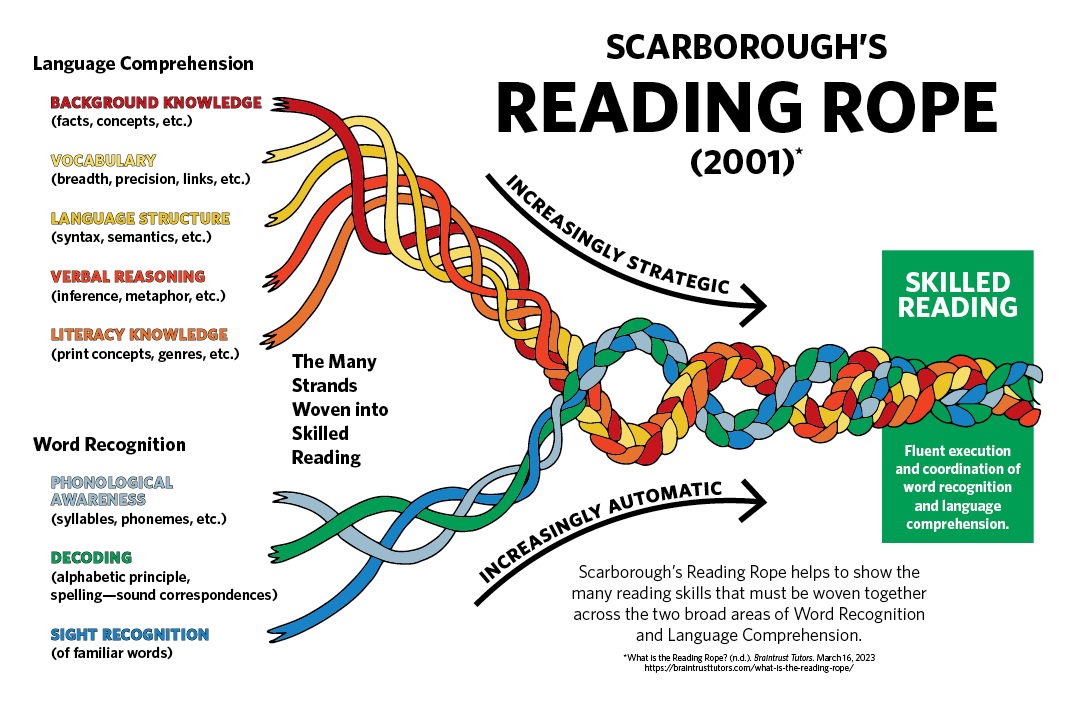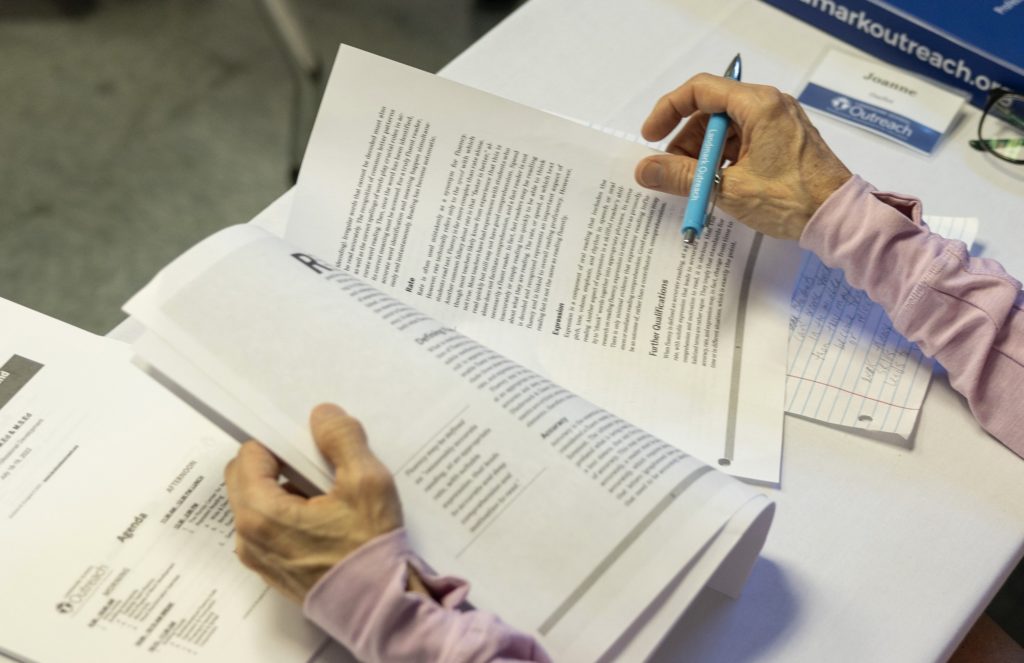Developed by Hollis Scarborough in 2001 and explained in her paper titled “Connecting Early Language to Later Reading (Dis)Abilities”, this helpful infographic, often called Scarborough’s Rope or the Reading Rope, explains how essential language skills work together to develop skilled reading.

Similar to the equation in the Simple View of Reading R = D x LC (Reading comprehension = Decoding x Linguistic comprehension), Scarborough’s rope asserts that both language comprehension and word recognition are necessary for skilled reading or for “fluent execution and coordination of word recognition and text comprehension” (Scarborough, 2001, figure 8.1 p. 98).
She describes the importance of automatic word recognition skills (phonological awareness, decoding, and sight recognition of words) to ensure that the reader exerts minimal effort to decode text, saving important cognitive energy for comprehension (Scarborough, 2001, p. 98).
She also delineates that simply focusing on word recognition does not present a complete picture of all the language skills needed for reading and that language comprehension is equally important in reading development. She explains that children must also have background and vocabulary knowledge, verbal reasoning, literacy knowledge, and an understanding of language structure to comprehend what they read.
Like the Simple View of Reading, Scarborough’s rope can help educators understand what instruction is needed to develop students into skilled readers. The rope can also serve as a road map to help identify students’ reading difficulties. Each strand of the reading rope intersects and weaves together, making skilled reading. Weakness in one strand can cause the rope to fray, causing a loss of essential strength in word recognition or language comprehension. Teachers can use these theoretical models to design curricula that target the origin of a student’s reading difficulty. Although the original goal of this infographic was to call attention to all the skills needed for early literacy as a way to identify more children at risk for reading difficulty, the graphic has become a key part of the research in the science of reading, helping teachers support students in developing a strong, stable base for word recognition and language comprehension.
References
- Scarborough’s reading rope: A groundbreaking infographic. International Dyslexia Association. (2018, April 4). Retrieved October 4, 2022, from https://dyslexiaida.org/scarboroughs-reading-rope-a-groundbreaking-infographic/
- Scarborough, H.S. (2001). Connecting early language and literacy to later reading (dis)abilities: Evidence, Theory, and Practice. In S. Neuman & D. Dickinson (Eds.), Handbook for research in early literacy (pp. 97 – 110). New York: Guilford Press.
- Stewart, L. (2020). The Science of Reading: Evidence for a New Era of Reading Instruction [White paper]. The Reading League.



